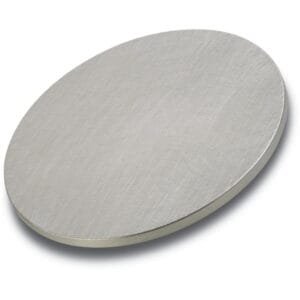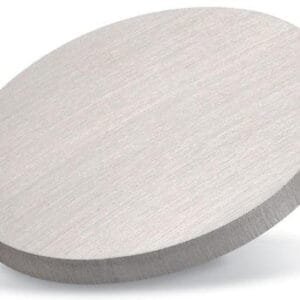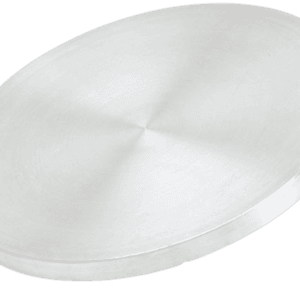Platinum Manganese Sputtering Target Description
Platinum Manganese Sputtering Targets ensure precise chemical composition and high purity, which are crucial for thin film preparation. The surface properties and performance of these targets are essential for achieving high-quality, uniform films. The characteristics of the targets are vital for controlling the thin film deposition process. They exhibit magnetic properties, making them suitable for magnetic films and storage applications. Additionally, they provide good electrical conductivity, which is beneficial for preparing conductive films and electronic devices. Their thermal stability also supports reliable performance at elevated temperatures.
Related Product: Platinum Sputtering Target, Lead Platinum Sputtering Target
Platinum Manganese Sputtering Target Specifications
| Compound Formula | PtMn |
| Molecular Weight | 250.02 |
| Appearance | Silver Target |
| Available Sizes | Dia.: 1.0″, 2.0″, 3.0″, 4.0″, 5.0″, 6.0″ Thick: 0.125″, 0.250″ |
Platinum Manganese Sputtering Target Handling Notes
Indium bonding is recommended for Platinum Manganese Sputtering Targets because of the material’s brittleness and low thermal conductivity, which are not ideal for sputtering. This material’s low thermal conductivity and susceptibility to thermal shock make it important to use appropriate bonding techniques to ensure stability and performance during the sputtering process.
Platinum Manganese Sputtering Target Application
The Platinum Manganese Sputtering Target finds diverse applications in thin film deposition, semiconductor technology, and display manufacturing. It is used in LED production and the development of photovoltaic devices, as well as in the creation of functional coatings and optical data storage. The target also plays a key role in the glass coating sector, including automotive and architectural glass applications. Additionally, it is utilized in optical communication technologies and across various industries, highlighting its significance in advancing multiple technologies and industrial processes.
Platinum Manganese Sputtering Target Packaging
Our Platinum Manganese Sputtering Target is meticulously handled during storage and transportation to maintain the quality of our products in their original condition.


 MSDS File
MSDS File



Reviews
There are no reviews yet.